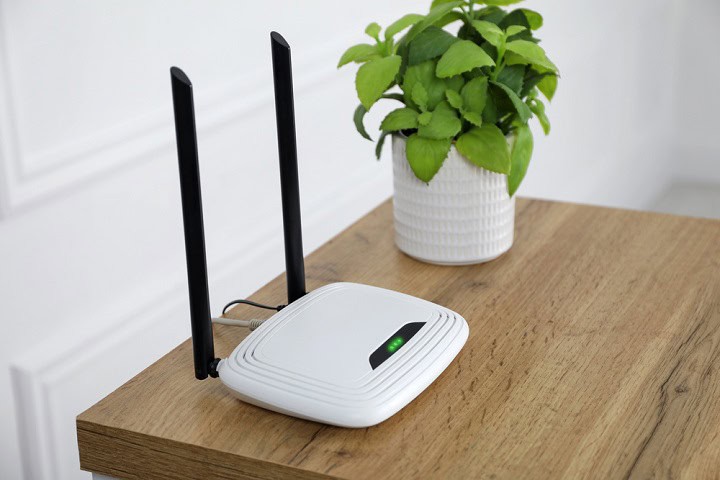
Wi-Fi 7 is beginning to create quite a stir, and if you're considering updating your router, you may be pondering whether it's worthwhile to wait and invest more money into it. Boasting incredibly fast speeds, enhanced functionality in bustling households, and superior compatibility with smart gadgets, this new standard seems highly promising. However, how significant will these improvements really be for typical families? This article aims to clarify everything you should know about Wi-Fi 7, compare it with Wi-Fi 6, and help decide if now is the moment to upgrade or perhaps delay a bit further.
Key Characteristics and Enhancements in Wi-Fi 7
Wi-Fi 7, referred to as 802.11be, marks a significant advancement in wireless connectivity technology, offering enhanced speed, reduced latency, and superior functionality in congested areas. A key feature is Multi-Link Operation (MLO), enabling gadgets to simultaneously use various frequency spectrums including 2.4GHz, 5GHz, and 6GHz. Consequently, this ensures improved experience during activities like online gaming, virtual meetings, or media playback—all with minimal interruptions and delay. Additionally, Wi-Fi 7 incorporates broader channel widths up to 320 MHz for expedited data transmission across networks, along with doubling the quantity of sub-channels per band to mitigate signal overlap issues effectively.
A significant enhancement with Wi-Fi 7 involves support for higher QAM—specifically 4K QAM—which enables greater amounts of data to be transmitted per packet. Practically speaking, this can result in potential peak rates as high as 46 gigabits per second; however, actual performance may vary from these estimates under everyday conditions. Additionally, Wi-Fi 7 makes modifications aimed at enhancing both the clarity and power of signals. Such improvements broaden the effective span of wireless networks, ensuring stronger connectivity across expansive spaces within structures. Consequently, this might lead to reduced instances of spotty service and enhanced dependability when accessing the web throughout various sections of a property. Moreover, refinements in signaling should contribute to smoother operation, minimizing disruptions and sustaining uninterrupted links for end-users.
WiFi 7 Versus WiFi 6
The primary distinction between Wi-Fi 7 and Wi-Fi 6 lies in their respective speeds. With real-world capabilities topping out at around 9.6 Gbps, Wi-Fi 6 (802.11ax) offers remarkable throughput for typical household use. However, Wi-Fi 7 takes this several steps further by theoretically achieving peak speeds as high as 46 Gbps. These enhanced rates stem from advancements such as wider channels spanning 320 MHz, improved modulation using 4K QAM, and efficient multi-link operation via MLO—all contributing factors that enable faster and more effective data transmission. Although these heightened velocities might be excessive for everyday web surfing or standard video playback, they provide significant advantages in environments brimming with connected gadgets or where activities like 8K content streaming, competitive gaming, or handling extensive file transfers across the network are commonplace.
In terms of range, Wi-Fi 7 doesn't necessarily extend coverage beyond what Wi-Fi 6 offers-but it does handle that coverage more efficiently. Wi-Fi 7 uses better spectrum management and can operate on multiple bands simultaneously, which helps reduce congestion and improves reliability in crowded networks. That means fewer dead zones and more consistent speeds throughout the home, especially in environments where many users or smart devices are online at the same time. While Wi-Fi 6 already brought improvements over earlier versions in terms of handling multiple devices, Wi-Fi 7 builds on that foundation and is better equipped for the ever-growing number of connected gadgets in modern homes.
Wi-Fi 7 represents a significant leap beyond the capabilities of Wi-Fi 6, particularly beneficial for ultra-high-definition streaming, cloud gaming, and handling massive file transfers. Although many households might not require such speeds currently, the enhanced capacity and efficiency can help ensure your network remains robust well into the future.
Do You Need to Switch to Wi-Fi 7?
Switching to Wi-Fi 7 seems thrilling, yet determining if it’s the best choice at present hinges on your current configuration and financial resources. As of now, Wi-Fi 7 routers remain quite novel and tend to cost significantly more than their Wi-Fi 6 or Wi-Fi 6E counterparts. Although theoretical speed gains look promising, these enhancements may only become apparent if you own numerous bandwidth-intensive gadgets or frequently max out your network capabilities.
A key factor to consider is device compatibility. Currently, most laptops, smartphones, and smart home devices do not support Wi-Fi 7. This implies that even if you purchase a Wi-Fi 7 router now, your equipment may fail to fully utilize its capabilities. Therefore, for numerous householders, opting for a reliable Wi-Fi 6 or 6E router could be more practical in the near term. It’s advisable to hold off on adopting Wi-Fi 7 unless you’re setting up an advanced system or have devices equipped with Wi-Fi 7 functionality; otherwise, waiting till this tech becomes commonplace and budget-friendly would likely prove wiser.
In Summary
Switching to Wi-Fi 7 seems thrilling, yet it largely hinges on your present requirements and configuration. Despite providing enhanced speed and superior performance, many homes might discover that Wi-Fi 6 continues to meet their demands adequately. Given that Wi-Fi 7 equipment is currently being introduced gradually and comes with a premium price tag, it could be prudent to hold off unless you are an avid user or absolutely crave having the newest technology immediately. Assess your current gear, verify whether your devices will benefit from this upgrade, and determine if the advantages justify the expense at this moment or would be more worthwhile saving up for down the line.
The post Is WiFi 7 Just Ahead? Here’s What You Should Consider Before Upgrading appeared first on AllTheThings .
